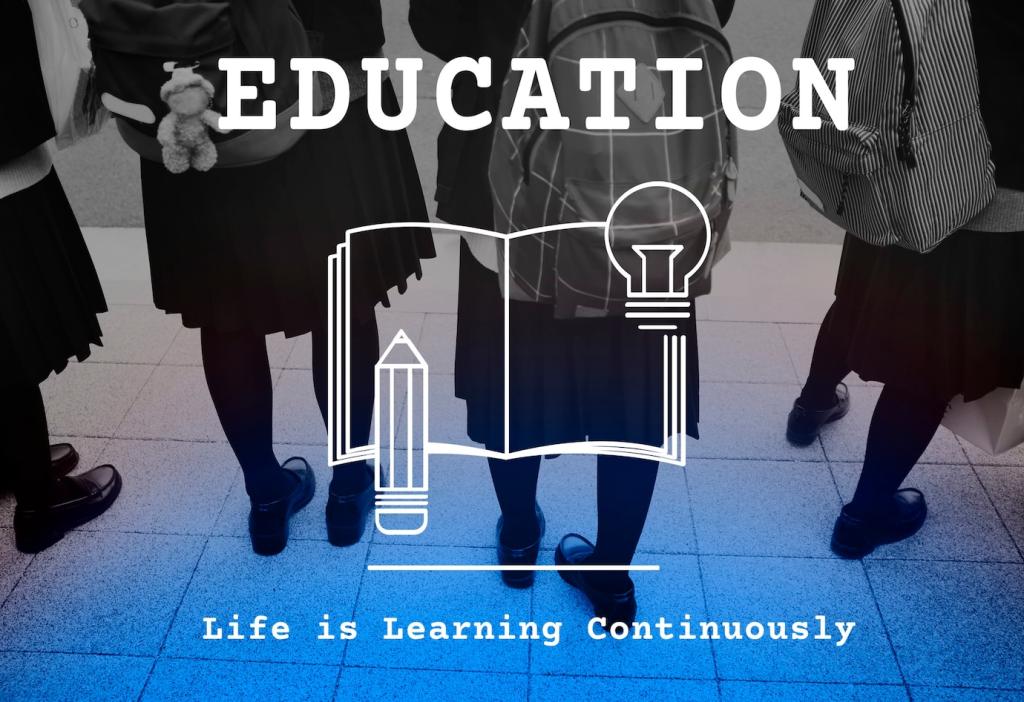Opening Doors: The Role of Education Access in Workforce Competitiveness
Chosen theme: The Role of Education Access in Workforce Competitiveness. Explore how removing barriers to learning fuels innovation, productivity, and inclusive growth—and join our community building pathways from classrooms to thriving careers.



Why Access Matters for Competitive Workforces
When learners can actually reach training that matches market demand, jobs fill faster and wages rise more sustainably. A graduate who once commuted two hours for classes told us that flexible evening access turned a stalled semester into a cybersecurity role within six months.
Why Access Matters for Competitive Workforces
Rural and remote communities often lose out on specialized training. One logistics firm partnered with a regional college to stream labs over low-latency networks, allowing farm-town students to earn credentials without relocating and boosting local hiring by the harvest season.
Building Pathways: Scholarships, Community Colleges, and Open Learning

Scholarships that Multiply Opportunity
Targeted scholarships aligned to shortage occupations can unlock rapid gains. Maya, a single parent, used a childcare-inclusive award for a coding bootcamp, then landed a junior developer role, doubling household income and adding a much-needed Python specialist to a growing startup.

Community Colleges as Engines of Mobility
Community colleges adapt quickly, creating certificates with local employers. One campus built a battery-technician program with an energy consortium, adding weekend labs. Completion fed a gigafactory ramp-up, cutting onboarding time while graduates reported meaningful, stable career entry points.

Open Courses and Microlearning at Scale
Open educational resources reduce costs and widen entry lanes. Workers follow ten-minute modules during lunch breaks, then stack micro-courses toward recognized credentials, converting spare time into tangible progress that recruiters can understand and reward during hiring sprints.
Industry Alignment and Skills Relevance
Curriculum Co-Designed with Employers
Advisory boards that include frontline supervisors ensure assignments mirror actual tasks. Students practice troubleshooting with the same dashboards used on the job, reducing orientation time and increasing day-one productivity across maintenance, finance operations, and customer support roles.
Apprenticeships and Work-Integrated Learning
Paid apprenticeships lower risk for learners and firms. A welding apprentice rotated through design, shop floor, and quality checks, earning while learning. Upon completion, their defect rate remained consistently below team averages, validating the structured, hands-on approach.
Micro-credentials and Stackable Pathways
Short, verifiable credentials let learners advance without pausing life. Employers recognize stacks that combine safety, software, and communication badges, signaling reliable capability growth and making internal mobility pathways clear for supervisors and human resources partners.

Equity, Inclusion, and the Talent Dividend
Evenings, childcare, and credit for prior learning convert experience into credentials. An ex-hospitality worker completed a data certificate by mapping customer analytics projects to coursework, moving into an insights role and bringing invaluable service perspective to product teams.
Equity, Inclusion, and the Talent Dividend
Mobile labs, satellite classrooms, and shared instructors stitch together thin markets. One county used a traveling STEM van to deliver lab hours, letting high school seniors complete dual-credit courses and step directly into paid internships without leaving their hometowns.
Digital Infrastructure and the New Learning Experience
01
Broadband as an Educational Utility
Reliable internet is now as essential as electricity for learning. A regional broadband upgrade synchronized class uploads and simulations, helping nursing students practice telehealth scenarios and filling urgent care vacancies faster during a seasonal staffing crunch.
02
AI and Adaptive Learning
Adaptive tools personalize pace and feedback, reducing frustration. One analytics course used scenario branching to adjust difficulty per learner. Struggling students received targeted exercises, while advanced learners tackled stretch projects, raising overall confidence and project quality during capstone reviews.
03
Hybrid Models that Fit Real Lives
Combining in-person labs with online theory respects work schedules. A manufacturing cohort watched micro-lectures after shifts, then met on Saturdays for machine time, keeping overtime earnings intact while still mastering the exact competencies hiring managers prioritize and reward.
Measuring Impact and Sustaining Momentum
Track enrollment, completion, time-to-hire, wage growth, and employer satisfaction. Dashboards that compare cohorts inform rapid tweaks, like adding resume workshops before peak recruiting, which measurably shortens the path from final exam to first offer acceptance.

